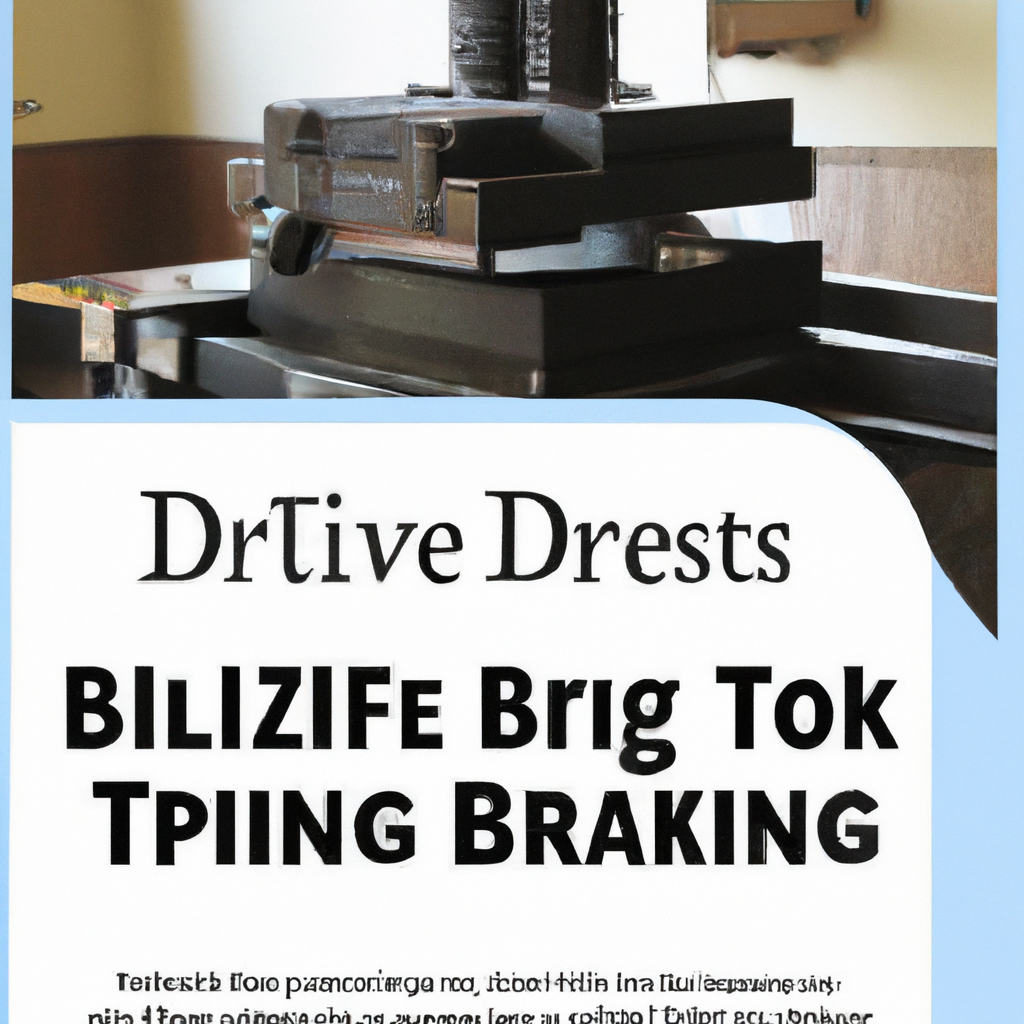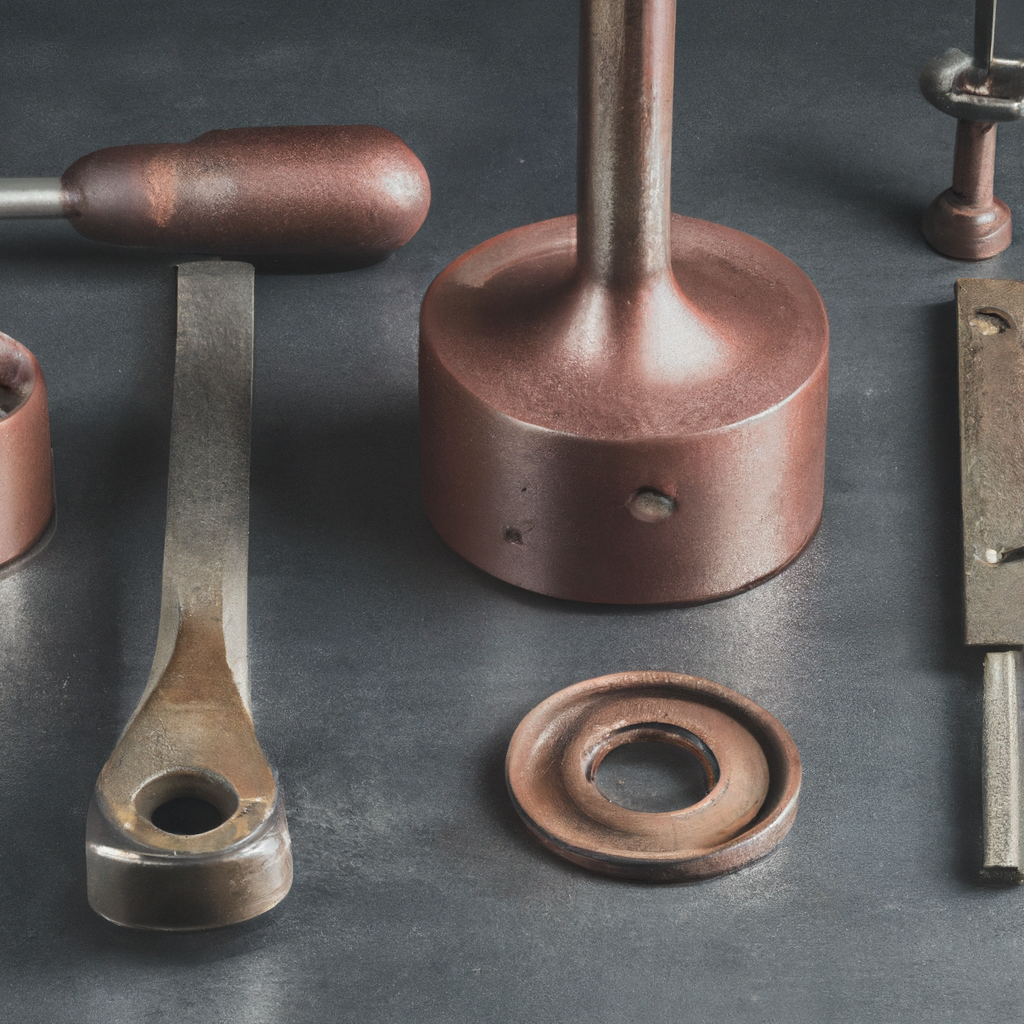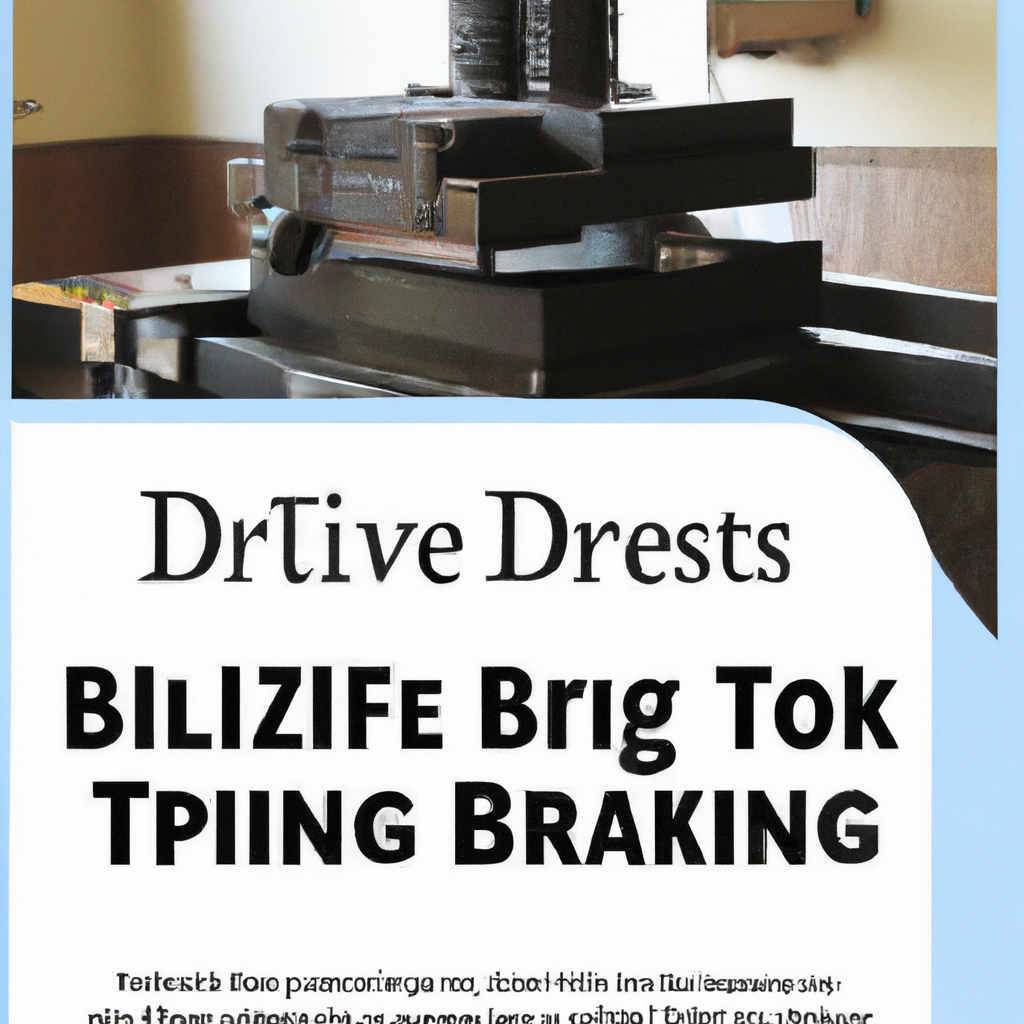If you own a drill press, you know how frustrating it can be to find rust on its surface. Rust not only affects the performance of your drill press but also reduces its lifespan. Luckily, there are simple and effective ways to prevent your drill press from rusting. In this article, we will explore some practical tips and techniques that will help you keep your drill press looking brand new and functioning at its best. Say goodbye to rust and hello to a rust-free drill press that will serve you well for years to come!

Choosing the Right Location
Clean and Dry Space
When it comes to keeping your drill press from rusting, the first step is to ensure that you have a clean and dry space to store it. Moisture is the enemy here, so finding a spot that is free from any leaks or dampness is crucial. Make sure that the area is also free from any debris or dust that could contribute to rust formation.
Proper Ventilation
Along with a clean and dry space, it’s important to consider the ventilation in the area where your drill press will be stored. Good airflow can help prevent the buildup of moisture, which can lead to rust. If possible, choose a location that allows for proper ventilation, such as near a window or in a well-ventilated workshop.
Protective Covers
Dust Covers
One of the easiest and most effective ways to prevent rust on your drill press is by using a dust cover. Dust covers are specially designed to keep dust and other particles from settling on your tools, including your drill press. By keeping dust at bay, you not only reduce the risk of rust formation but also extend the lifespan of your equipment.
Waterproof Covers
In addition to dust covers, using a waterproof cover can provide an extra layer of protection for your drill press. Waterproof covers are made from durable materials that are resistant to water and moisture. By using a waterproof cover, you can safeguard your drill press from unexpected spills or high humidity levels, preventing rust from forming.
Regular Cleaning
Removing Dust and Debris
Regularly cleaning your drill press is essential to prevent rust. Dust and debris can accumulate on your equipment, creating a breeding ground for rust to develop. Using a soft brush or compressed air, remove any dust or debris from the surface of your drill press. Additionally, make sure to clean out any crevices or hard-to-reach areas where dust might accumulate.
Cleaning with Solvents
In some cases, dust and debris can be stubborn and difficult to remove with just a brush or compressed air. In these cases, using solvents can help ensure a thorough cleaning. Be sure to choose solvents that are safe for use on metal surfaces and follow the manufacturer’s instructions carefully. Wipe the surfaces of your drill press with a clean cloth soaked in the solvent, making sure to remove any dirt or grime that could contribute to rust formation.

Applying Lubricants
Using Rust Preventative Fluid
Lubricating your drill press is crucial for its proper functioning and to prevent rust. Consider using a rust preventative fluid, specifically designed to protect metal surfaces from moisture and corrosion. Apply the rust preventative fluid to the moving parts of your drill press, such as the spindle and the column, using a clean cloth or a spray bottle. By regularly applying a rust preventative fluid, you create a protective barrier that helps keep your drill press rust-free.
Applying Machine Oil
In addition to using a rust preventative fluid, regularly oiling your drill press is another essential step in preventing rust. Machine oil helps to lubricate the parts of your drill press, reducing friction and minimizing the risk of rust formation. Apply a small amount of machine oil to the moving parts of your drill press, making sure to distribute it evenly. This will help maintain the smooth operation of your equipment and keep rust at bay.
Avoiding Moisture
Drying Workpieces
Moisture can be introduced to your drill press through the workpieces you are drilling. If the workpiece is wet or damp, the moisture can transfer onto the surfaces of your drill press, potentially causing rust. To avoid this, make sure to thoroughly dry your workpieces before using them on your drill press. Wipe them down with a clean cloth or let them air-dry completely before starting your project.
Using Dry Air
In addition to drying your workpieces, using dry air can help minimize moisture and prevent rust formation. Consider using a fan or dehumidifier in your workshop to circulate dry air and reduce humidity levels. By keeping the air dry, you create an environment that is less conducive to rust development, ensuring the longevity of your drill press.
Preventing Humidity
Dehumidifiers
In areas with high humidity levels, using a dehumidifier can be an effective solution to prevent rust on your drill press. Dehumidifiers work by removing excess moisture from the air, reducing the overall humidity level in the space. By maintaining a lower humidity environment, you create a less favorable condition for rust formation, keeping your drill press safe and rust-free.
Silica Gel Packets
Another alternative to combating humidity is to use silica gel packets. Silica gel is a desiccant that absorbs moisture from the air, helping to keep your drill press and other tools dry. Place silica gel packets near your drill press, inside the toolbox, or in the storage area to absorb any excess moisture. This simple yet effective solution can significantly reduce the risk of rust on your equipment.
Removing Rust
Using Rust Remover
In the unfortunate event that your drill press develops rust, it’s important to tackle it promptly to prevent further damage. Rust remover products are readily available and can help dissolve and remove rust from metal surfaces. Follow the instructions provided by the manufacturer and apply the rust remover to the affected areas. Use a scrub brush or abrasive pad to gently scrub away the rust, then rinse the surface thoroughly and dry it completely.
Abrasive Techniques
If the rust proves to be stubborn or deeply ingrained, more aggressive techniques may be necessary. Using abrasive materials such as sandpaper, steel wool, or a wire brush can help remove the rust effectively. Be careful not to damage the underlying metal surface while removing the rust. Afterward, clean the surface, apply a rust preventative fluid, and take necessary measures to avoid future rust formation.
Regular Maintenance
Checking for Wear and Tear
Regularly inspecting your drill press for any signs of wear and tear is essential for its long-term performance and rust prevention. Pay attention to the moving parts, belts, and bolts, ensuring that they are in good condition and properly secured. Replace any damaged or worn-out components promptly to prevent further damage and potential rusting.
Replacing Parts
If during your maintenance inspections you find any parts that are heavily rusted or beyond repair, it’s important to replace them as soon as possible. Rust can compromise the integrity and functionality of your drill press, so ensuring that all parts are in optimal condition is crucial. By replacing rusted parts, you not only extend the lifespan of your equipment but also minimize the risk of further rust development.
Covering the Drill Press
Using Plastic Sheets
When your drill press is not in use, covering it can provide added protection against rust. Plastic sheets are a convenient and affordable option for covering your drill press. Simply drape the plastic sheet over the equipment, ensuring that it covers all surfaces. This barrier helps to prevent moisture and dust from accumulating on your drill press, reducing the risk of rust formation.
Wrapping with Cloth
Alternatively, you can also wrap your drill press with cloth for added protection. Use a clean and dry cloth or towel to wrap around the equipment, securing it in place with rubber bands or zip ties. The cloth acts as a barrier against moisture and dust, helping to keep your drill press rust-free. Additionally, the cloth cover can also serve as an extra cushion to protect your drill press from accidental bumps or scratches.
Powering Off Correctly
Turning Off the Power
When you have completed your drilling tasks and are ready to store your drill press, it’s important to turn off the power correctly. Simply switching off the power button is not enough; you should always disconnect the power supply by turning off the main switch or unplugging the drill press. This ensures that no electrical currents can accidentally ignite any flammable materials or cause damage to the equipment.
Unplugging the Drill Press
In addition to turning off the power, unplugging your drill press from the wall socket is an important step in preventing rust. When the drill press is left plugged in, there is still a slight electrical charge running through the device. This charge can attract moisture and contribute to rust formation. By unplugging the drill press, you eliminate this risk and help keep your equipment safe and rust-free.
In conclusion, keeping your drill press from rusting is a combination of preventative measures, regular maintenance, and proper storage practices. By choosing the right location, using protective covers, regularly cleaning and lubricating your equipment, avoiding moisture and humidity, and taking prompt action against rust, you can ensure the longevity and optimal performance of your drill press. With these simple yet effective strategies, you can enjoy a rust-free and reliable drilling experience for years to come.

